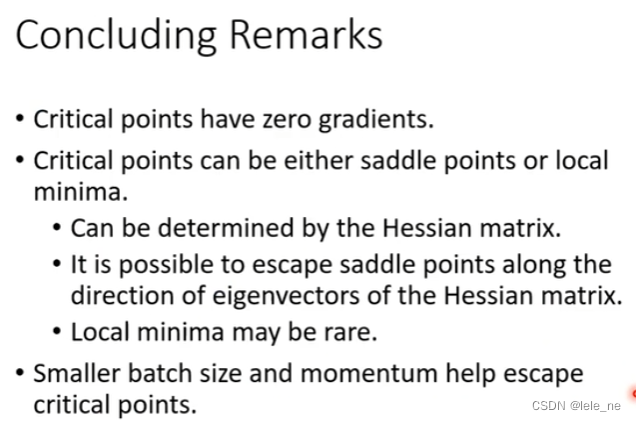目录
1、环境初始化
【1】改名字和主机名解析
【2】时间同步
【3】禁用iptables和firewalld服务(三台都要设置)
【4】禁用selinux(三台都要设置)
【5】禁用swap分区
【6】修改linux的内核参数
2、安装docker
【1】安装docker依赖
【2】设置docker仓库镜像地址
【3】查看镜像支持的docker版本
【4】安装docker
【5】设置docker开机启动
【6】设置镜像加速(去阿里云创建自己的)
3、安装kubernetes组件
【1】由于kubernetes的镜像源在国外,速度比较慢,这里切换成国内的镜像源
【2】安装kubeadm、kubelet和kubect1
【4】设置开机启动
【5】查看是否安装好
4、集群初始化
【1】提前下载好镜像
【2】下面开始对集群进行初始化,并将node节点加入到集群中(在master执行)
输出的内容记一下:
5、安装网络插件(主节点)
【1】下载calico网络
【2】将node加入master
【3】耐心几分钟后,检查一下
6、安装NFS存储
【1】所有节点安装NFS
【2】然后再主节点:
【3】从节点
7、配置默认存储
8、安装metrics-server
9、安装KubeSphere
10、最后访问任意机器的 30880端口
1、环境初始化
【1】改名字和主机名解析
#给每台机子改名字
hostnamectl set-hostname masterhostnamectl set-hostname node01hostnamectl set-hostname node02#为了方便后面集群节点间的直接调用,在这配置一下主机名解析, 编辑三台服务器的/etc /hosts文件,添加下面内容
172.31.0.2 master
172.31.0.3 node01
172.31.0.4 node02
测试都可以用名字ping通
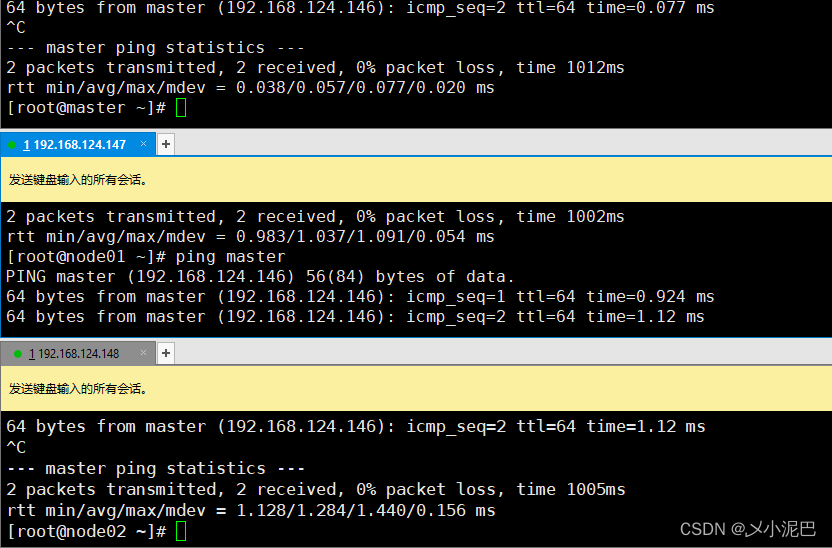
【2】时间同步
kubernetes要求集群中的节点时间必须精确一致,这里直接使用chronyd服务从网络同步时间.企业中建议配置内部的时间同步服务器
systemctl start chronyd
systemctl enable chronyd【3】禁用iptables和firewalld服务(三台都要设置)
kubernetes和docker在运行中会产生大量的iptables规则,为了不让系统规则跟它们混淆,直接关闭系统的规则
systemctl stop firewalld
systemctl disable firewalld
【4】禁用selinux(三台都要设置)
selinux是linux系统下的一个安全服务,如果不关闭它,在安装集群中会产生各种各样的奇葩问题
setenforce 0编辑 /etc/selinux/config 文件,修改SELINUX的值为disabled
# 注意修改完毕之后需要重启linux服务
SELINUX=disabled
【5】禁用swap分区
swap分区指的是虚拟内存分区,它的作用是在物理内存使用完之后,将磁盘空间虚拟成内存来使用启用swap设备会对系统的性能产生非常负面的影响,因此kubernetes要求每个节点都要禁用swap设备但是如果因为某些原因确实不能关闭swap分区,就需要在集群安装过程中通过明确的参数进行配置说明
编辑分区配置文件/etc/fstab,注释掉swap分区一行
# 注意修改完毕之后需要重启linux服务
# /etc/fstab
# Created by anaconda on Wed Dec 29 17:42:21 2021
#
# Accessible filesystems, by reference, are maintained under '/dev/disk'
# See man pages fstab(5), findfs(8), mount(8) and/or blkid(8) for more info
#
/dev/mapper/centos-root / xfs defaults 0 0
UUID=8d3c5312-ab8f-425f-8a0e-87aca3402d91 /boot xfs defaults 0 0
#/dev/mapper/centos-swap swap swap defaults 0 0
~ 【6】修改linux的内核参数
修改linux的内核参数,添加网桥过和地址转发功能
# 编辑/etc/sysctl.d/kubernetes.cof文件,添加如下配置
vi /etc/sysctl.d/kubernetes.conf
#
net.bridge.bridge-nf-call-ip6tables = 1
net.bridge.bridge-nf-call-iptables = 1
net.ipv4.ip_forward = 1
#
#然后执行
sysctl --system //生效命令
加载网桥过滤模块并查看是否成功
[root@node01 ~]# modprobe br_netfilter
[root@node01 ~]# lsmod | grep br_netfilter
br_netfilter 22256 0
bridge 151336 1 br_netfilter
[root@node01 ~]#
2、安装docker
【1】安装docker依赖
yum install -y yum-utils【2】设置docker仓库镜像地址
yum-config-manager --add-repo http://mirrors.aliyun.com/docker-ce/linux/centos/docker-ce.repo【3】查看镜像支持的docker版本
yum list docker-ce --showduplicates
【4】安装docker
yum install docker-ce-20.10.7 docker-ce-cli-20.10.7 containerd.io-1.4.6 -y【5】设置docker开机启动
systemctl enable docker && systemctl start docker【6】设置镜像加速(去阿里云创建自己的)
sudo mkdir -p /etc/docker
sudo tee /etc/docker/daemon.json <<-'EOF'
{
"registry-mirrors": ["https://oihu2r88.mirror.aliyuncs.com"]
}
EOF
sudo systemctl daemon-reload
sudo systemctl restart docker3、安装kubernetes组件
【1】由于kubernetes的镜像源在国外,速度比较慢,这里切换成国内的镜像源
cat > /etc/yum.repos.d/kubernetes.repo << EOF
[kubernetes]
name=Kubernetes
baseurl=https://mirrors.aliyun.com/kubernetes/yum/repos/kubernetes-el7-x86_64
enabled=1
gpgcheck=0
repo_gpgcheck=0
gpgkey=https://mirrors.aliyun.com/kubernetes/yum/doc/yum-key.gpg https://mirrors.aliyun.com/kubernetes/yum/doc/rpm-package-key.gpg
EOF【2】安装kubeadm、kubelet和kubect1
yum install -y kubelet-1.20.9 kubeadm-1.20.9 kubectl-1.20.9 --disableexcludes=kubernetes 【4】设置开机启动
systemctl enable kubelet --now kubelet【5】查看是否安装好
yum list installed | grep kubelet
yum list installed | grep kubeadm
yum list installed | grep kubectl
#查看安装的版本: kubelet --version4、集群初始化
【1】提前下载好镜像
sudo tee ./images.sh <<-'EOF'
#!/bin/bash
images=(
kube-apiserver:v1.20.9
kube-controller-manager:v1.20.9
kube-scheduler:v1.20.9
kube-proxy:v1.20.9
pause:3.2
etcd:3.4.13-0
coredns:1.7.0
)
for imageName in ${images[@]} ; do
docker pull registry.cn-hangzhou.aliyuncs.com/google_containers/$imageName
done
EOF给一个执行权限并执行
chmod +x ./images.sh && ./images.sh【2】下面开始对集群进行初始化,并将node节点加入到集群中(在master执行)
下面的操作只需要在 master 节点上执行即可(172.31.0.2为master节点)
kubeadm init \
--apiserver-advertise-address=172.31.0.2 \
--control-plane-endpoint=master \
--image-repository registry.aliyuncs.com/google_containers \
--kubernetes-version v1.20.9 \
--service-cidr=10.96.0.0/16 --pod-network-cidr=192.168.0.0/16输出的内容记一下:
Your Kubernetes control-plane has initialized successfully!
To start using your cluster, you need to run the following as a regular user:
mkdir -p $HOME/.kube
sudo cp -i /etc/kubernetes/admin.conf $HOME/.kube/config
sudo chown $(id -u):$(id -g) $HOME/.kube/config
Alternatively, if you are the root user, you can run:
export KUBECONFIG=/etc/kubernetes/admin.conf
You should now deploy a pod network to the cluster.
Run "kubectl apply -f [podnetwork].yaml" with one of the options listed at:
https://kubernetes.io/docs/concepts/cluster-administration/addons/
You can now join any number of control-plane nodes by copying certificate authorities
and service account keys on each node and then running the following as root:
kubeadm join master:6443 --token 8f21i4.47o0wzoivzsyaaqw \
--discovery-token-ca-cert-hash sha256:e1946aac342d570b78bd48a5718f4eac43b0f58eae17cc7511a1ec4d3a414826 \
--control-plane
Then you can join any number of worker nodes by running the following on each as root:
kubeadm join master:6443 --token 8f21i4.47o0wzoivzsyaaqw \
--discovery-token-ca-cert-hash sha256:e1946aac342d570b78bd48a5718f4eac43b0f58eae17cc7511a1ec4d3a414826
然后重启,重启
5、安装网络插件(主节点)
【1】下载calico网络
curl https://docs.projectcalico.org/v3.18/manifests/calico.yaml -O执行命令
kubectl apply -f calico.yaml 【2】将node加入master
根据主节点的提示想要其他节点加入本master节点输入下列(在node01和node02)
kubeadm join master:6443 --token 8f21i4.47o0wzoivzsyaaqw \
--discovery-token-ca-cert-hash sha256:e1946aac342d570b78bd48a5718f4eac43b0f58eae17cc7511a1ec4d3a414826 然后等一会儿,然后等一会儿,然后等一会儿
【3】耐心几分钟后,检查一下
[root@master ~]# kubectl get pod -A
NAMESPACE NAME READY STATUS RESTARTS AGE
kube-system calico-kube-controllers-56c7cdffc6-trxkj 1/1 Running 0 26m
kube-system calico-node-8zsdw 1/1 Running 0 4m50s
kube-system calico-node-khp6k 1/1 Running 0 4m57s
kube-system calico-node-vkqhc 1/1 Running 0 26m
kube-system coredns-7f89b7bc75-65jnr 1/1 Running 0 39m
kube-system coredns-7f89b7bc75-lrtqq 1/1 Running 0 39m
kube-system etcd-master 1/1 Running 0 40m
kube-system kube-apiserver-master 1/1 Running 0 40m
kube-system kube-controller-manager-master 1/1 Running 0 40m
kube-system kube-proxy-9k8ps 1/1 Running 0 39m
kube-system kube-proxy-nvzmj 1/1 Running 0 4m57s
kube-system kube-proxy-zph7s 1/1 Running 0 4m50s
kube-system kube-scheduler-master 1/1 Running 0 4全部好了以后
[root@master ~]# kubectl get node
NAME STATUS ROLES AGE VERSION
master Ready control-plane,master 43m v1.20.9
node01 Ready <none> 7m55s v1.20.9
node02 Ready <none> 7m48s v1.20.96、安装NFS存储
【1】所有节点安装NFS
yum install -y nfs-utils【2】然后再主节点:
# nfs主节点
echo "/nfs/data/ *(insecure,rw,sync,no_root_squash)" > /etc/exports
mkdir -p /nfs/data
systemctl enable rpcbind --now
systemctl enable nfs-server --now
# 配置生效
exportfs -r 实例:
[root@master ~]# echo "/nfs/data/ *(insecure,rw,sync,no_root_squash)" > /etc/exports
[root@master ~]# mkdir -p /nfs/data
[root@master ~]# systemctl enable rpcbind --now
[root@master ~]# systemctl enable nfs-server --now
Created symlink from /etc/systemd/system/multi-user.target.wants/nfs-server.service to /usr/lib/systemd/system/nfs-server.service.
[root@master ~]# exportfs -r
[root@master ~]#
[root@master ~]# exportfs
/nfs/data <world>
【3】从节点
#看一下远程的服务器有哪些目录可以挂载
showmount -e masterIP
#先在本机创建一个目录/nfs/data
#然后将远程服务器(master)的/nfs/data目录挂载到本机的/nfs/data目录
mkdir -p /nfs/data
mount -t nfs masteIP:/nfs/data /nfs/data
#写入一个测试文件
echo "hello nfs server" > /nfs/data/test.txt实例:
[root@node02 ~]# showmount -e 172.31.0.2
Export list for 172.31.0.4:
/nfs/data *
[root@node02 ~]# mkdir -p /nfs/data
[root@node02 ~]# mount -t nfs 172.31.0.2:/nfs/data /nfs/data
[root@node02 ~]# ls /nfs/data/7、配置默认存储
## 创建了一个存储类
apiVersion: storage.k8s.io/v1
kind: StorageClass
metadata:
name: nfs-storage
annotations:
storageclass.kubernetes.io/is-default-class: "true"
provisioner: k8s-sigs.io/nfs-subdir-external-provisioner
parameters:
archiveOnDelete: "true" ## 删除pv的时候,pv的内容是否要备份
---
apiVersion: apps/v1
kind: Deployment
metadata:
name: nfs-client-provisioner
labels:
app: nfs-client-provisioner
# replace with namespace where provisioner is deployed
namespace: default
spec:
replicas: 1
strategy:
type: Recreate
selector:
matchLabels:
app: nfs-client-provisioner
template:
metadata:
labels:
app: nfs-client-provisioner
spec:
serviceAccountName: nfs-client-provisioner
containers:
- name: nfs-client-provisioner
image: registry.cn-hangzhou.aliyuncs.com/lfy_k8s_images/nfs-subdir-external-provisioner:v4.0.2
# resources:
# limits:
# cpu: 10m
# requests:
# cpu: 10m
volumeMounts:
- name: nfs-client-root
mountPath: /persistentvolumes
env:
- name: PROVISIONER_NAME
value: k8s-sigs.io/nfs-subdir-external-provisioner
- name: NFS_SERVER
value: 172.31.0.2 ## 指定自己nfs服务器地址
- name: NFS_PATH
value: /nfs/data ## nfs服务器共享的目录
volumes:
- name: nfs-client-root
nfs:
server: 172.31.0.2
path: /nfs/data
---
apiVersion: v1
kind: ServiceAccount
metadata:
name: nfs-client-provisioner
# replace with namespace where provisioner is deployed
namespace: default
---
kind: ClusterRole
apiVersion: rbac.authorization.k8s.io/v1
metadata:
name: nfs-client-provisioner-runner
rules:
- apiGroups: [""]
resources: ["nodes"]
verbs: ["get", "list", "watch"]
- apiGroups: [""]
resources: ["persistentvolumes"]
verbs: ["get", "list", "watch", "create", "delete"]
- apiGroups: [""]
resources: ["persistentvolumeclaims"]
verbs: ["get", "list", "watch", "update"]
- apiGroups: ["storage.k8s.io"]
resources: ["storageclasses"]
verbs: ["get", "list", "watch"]
- apiGroups: [""]
resources: ["events"]
verbs: ["create", "update", "patch"]
---
kind: ClusterRoleBinding
apiVersion: rbac.authorization.k8s.io/v1
metadata:
name: run-nfs-client-provisioner
subjects:
- kind: ServiceAccount
name: nfs-client-provisioner
# replace with namespace where provisioner is deployed
namespace: default
roleRef:
kind: ClusterRole
name: nfs-client-provisioner-runner
apiGroup: rbac.authorization.k8s.io
---
kind: Role
apiVersion: rbac.authorization.k8s.io/v1
metadata:
name: leader-locking-nfs-client-provisioner
# replace with namespace where provisioner is deployed
namespace: default
rules:
- apiGroups: [""]
resources: ["endpoints"]
verbs: ["get", "list", "watch", "create", "update", "patch"]
---
kind: RoleBinding
apiVersion: rbac.authorization.k8s.io/v1
metadata:
name: leader-locking-nfs-client-provisioner
# replace with namespace where provisioner is deployed
namespace: default
subjects:
- kind: ServiceAccount
name: nfs-client-provisioner
# replace with namespace where provisioner is deployed
namespace: default
roleRef:
kind: Role
name: leader-locking-nfs-client-provisioner
apiGroup: rbac.authorization.k8s.io
执行yaml文件
[root@master ~]# vi sc.yaml
[root@master ~]#
[root@master ~]#
[root@master ~]# kubectl apply -f sc.yaml
storageclass.storage.k8s.io/nfs-storage created
deployment.apps/nfs-client-provisioner created
serviceaccount/nfs-client-provisioner created
clusterrole.rbac.authorization.k8s.io/nfs-client-provisioner-runner created
clusterrolebinding.rbac.authorization.k8s.io/run-nfs-client-provisioner created
role.rbac.authorization.k8s.io/leader-locking-nfs-client-provisioner created
rolebinding.rbac.authorization.k8s.io/leader-locking-nfs-client-provisioner created
创建一个pvc(用yaml)
kind: PersistentVolumeClaim
apiVersion: v1
metadata:
name: nginx-pvc
spec:
accessModes:
- ReadWriteMany
resources:
requests:
storage: 200Mi[root@master ~]# vi pvc.yaml
[root@master ~]# kubectl apply -f pvc.yaml
persistentvolumeclaim/nginx-pvc created
[root@master ~]# kubectl get pvc
NAME STATUS VOLUME CAPACITY ACCESS MODES STORAGECLASS AGE
nginx-pvc Bound pvc-d5301783-c63f-4998-b14a-e9b3657e1470 200Mi RWX nfs-storage 32s
[root@master ~]#
8、安装metrics-server
集群指标监控组件(yaml)
apiVersion: v1
kind: ServiceAccount
metadata:
labels:
k8s-app: metrics-server
name: metrics-server
namespace: kube-system
---
apiVersion: rbac.authorization.k8s.io/v1
kind: ClusterRole
metadata:
labels:
k8s-app: metrics-server
rbac.authorization.k8s.io/aggregate-to-admin: "true"
rbac.authorization.k8s.io/aggregate-to-edit: "true"
rbac.authorization.k8s.io/aggregate-to-view: "true"
name: system:aggregated-metrics-reader
rules:
- apiGroups:
- metrics.k8s.io
resources:
- pods
- nodes
verbs:
- get
- list
- watch
---
apiVersion: rbac.authorization.k8s.io/v1
kind: ClusterRole
metadata:
labels:
k8s-app: metrics-server
name: system:metrics-server
rules:
- apiGroups:
- ""
resources:
- nodes/metrics
verbs:
- get
- apiGroups:
- ""
resources:
- pods
- nodes
verbs:
- get
- list
- watch
---
apiVersion: rbac.authorization.k8s.io/v1
kind: RoleBinding
metadata:
labels:
k8s-app: metrics-server
name: metrics-server-auth-reader
namespace: kube-system
roleRef:
apiGroup: rbac.authorization.k8s.io
kind: Role
name: extension-apiserver-authentication-reader
subjects:
- kind: ServiceAccount
name: metrics-server
namespace: kube-system
---
apiVersion: rbac.authorization.k8s.io/v1
kind: ClusterRoleBinding
metadata:
labels:
k8s-app: metrics-server
name: metrics-server:system:auth-delegator
roleRef:
apiGroup: rbac.authorization.k8s.io
kind: ClusterRole
name: system:auth-delegator
subjects:
- kind: ServiceAccount
name: metrics-server
namespace: kube-system
---
apiVersion: rbac.authorization.k8s.io/v1
kind: ClusterRoleBinding
metadata:
labels:
k8s-app: metrics-server
name: system:metrics-server
roleRef:
apiGroup: rbac.authorization.k8s.io
kind: ClusterRole
name: system:metrics-server
subjects:
- kind: ServiceAccount
name: metrics-server
namespace: kube-system
---
apiVersion: v1
kind: Service
metadata:
labels:
k8s-app: metrics-server
name: metrics-server
namespace: kube-system
spec:
ports:
- name: https
port: 443
protocol: TCP
targetPort: https
selector:
k8s-app: metrics-server
---
apiVersion: apps/v1
kind: Deployment
metadata:
labels:
k8s-app: metrics-server
name: metrics-server
namespace: kube-system
spec:
selector:
matchLabels:
k8s-app: metrics-server
strategy:
rollingUpdate:
maxUnavailable: 0
template:
metadata:
labels:
k8s-app: metrics-server
spec:
containers:
- args:
- --cert-dir=/tmp
- --secure-port=4443
- --kubelet-preferred-address-types=InternalIP,ExternalIP,Hostname
- --kubelet-insecure-tls
- --kubelet-use-node-status-port
- --metric-resolution=15s
image: docker.io/bitnami/metrics-server:0.6.1
imagePullPolicy: IfNotPresent
livenessProbe:
failureThreshold: 3
httpGet:
path: /livez
port: https
scheme: HTTPS
periodSeconds: 10
name: metrics-server
ports:
- containerPort: 4443
name: https
protocol: TCP
readinessProbe:
failureThreshold: 3
httpGet:
path: /readyz
port: https
scheme: HTTPS
initialDelaySeconds: 20
periodSeconds: 10
resources:
requests:
cpu: 100m
memory: 200Mi
securityContext:
allowPrivilegeEscalation: false
readOnlyRootFilesystem: true
runAsNonRoot: true
runAsUser: 1000
volumeMounts:
- mountPath: /tmp
name: tmp-dir
nodeSelector:
kubernetes.io/os: linux
priorityClassName: system-cluster-critical
serviceAccountName: metrics-server
volumes:
- emptyDir: {}
name: tmp-dir
---
apiVersion: apiregistration.k8s.io/v1
kind: APIService
metadata:
labels:
k8s-app: metrics-server
name: v1beta1.metrics.k8s.io
spec:
group: metrics.k8s.io
groupPriorityMinimum: 100
insecureSkipTLSVerify: true
service:
name: metrics-server
namespace: kube-system
version: v1beta1
versionPriority: 100
[root@master ~]# kubectl top nodes
NAME CPU(cores) CPU% MEMORY(bytes) MEMORY%
master 169m 8% 1313Mi 69%
node01 82m 4% 726Mi 38%
node02 70m 3% 739Mi 38%
9、安装KubeSphere
先下载
wget https://github.com/kubesphere/ks-installer/releases/download/v3.1.1/kubesphere-installer.yaml
wget https://github.com/kubesphere/ks-installer/releases/download/v3.1.1/cluster-configuration.yaml
kubesphere-installer.yaml
---
apiVersion: apiextensions.k8s.io/v1beta1
kind: CustomResourceDefinition
metadata:
name: clusterconfigurations.installer.kubesphere.io
spec:
group: installer.kubesphere.io
versions:
- name: v1alpha1
served: true
storage: true
scope: Namespaced
names:
plural: clusterconfigurations
singular: clusterconfiguration
kind: ClusterConfiguration
shortNames:
- cc
---
apiVersion: v1
kind: Namespace
metadata:
name: kubesphere-system
---
apiVersion: v1
kind: ServiceAccount
metadata:
name: ks-installer
namespace: kubesphere-system
---
apiVersion: rbac.authorization.k8s.io/v1
kind: ClusterRole
metadata:
name: ks-installer
rules:
- apiGroups:
- ""
resources:
- '*'
verbs:
- '*'
- apiGroups:
- apps
resources:
- '*'
verbs:
- '*'
- apiGroups:
- extensions
resources:
- '*'
verbs:
- '*'
- apiGroups:
- batch
resources:
- '*'
verbs:
- '*'
- apiGroups:
- rbac.authorization.k8s.io
resources:
- '*'
verbs:
- '*'
- apiGroups:
- apiregistration.k8s.io
resources:
- '*'
verbs:
- '*'
- apiGroups:
- apiextensions.k8s.io
resources:
- '*'
verbs:
- '*'
- apiGroups:
- tenant.kubesphere.io
resources:
- '*'
verbs:
- '*'
- apiGroups:
- certificates.k8s.io
resources:
- '*'
verbs:
- '*'
- apiGroups:
- devops.kubesphere.io
resources:
- '*'
verbs:
- '*'
- apiGroups:
- monitoring.coreos.com
resources:
- '*'
verbs:
- '*'
- apiGroups:
- logging.kubesphere.io
resources:
- '*'
verbs:
- '*'
- apiGroups:
- jaegertracing.io
resources:
- '*'
verbs:
- '*'
- apiGroups:
- storage.k8s.io
resources:
- '*'
verbs:
- '*'
- apiGroups:
- admissionregistration.k8s.io
resources:
- '*'
verbs:
- '*'
- apiGroups:
- policy
resources:
- '*'
verbs:
- '*'
- apiGroups:
- autoscaling
resources:
- '*'
verbs:
- '*'
- apiGroups:
- networking.istio.io
resources:
- '*'
verbs:
- '*'
- apiGroups:
- config.istio.io
resources:
- '*'
verbs:
- '*'
- apiGroups:
- iam.kubesphere.io
resources:
- '*'
verbs:
- '*'
- apiGroups:
- notification.kubesphere.io
resources:
- '*'
verbs:
- '*'
- apiGroups:
- auditing.kubesphere.io
resources:
- '*'
verbs:
- '*'
- apiGroups:
- events.kubesphere.io
resources:
- '*'
verbs:
- '*'
- apiGroups:
- core.kubefed.io
resources:
- '*'
verbs:
- '*'
- apiGroups:
- installer.kubesphere.io
resources:
- '*'
verbs:
- '*'
- apiGroups:
- storage.kubesphere.io
resources:
- '*'
verbs:
- '*'
- apiGroups:
- security.istio.io
resources:
- '*'
verbs:
- '*'
- apiGroups:
- monitoring.kiali.io
resources:
- '*'
verbs:
- '*'
- apiGroups:
- kiali.io
resources:
- '*'
verbs:
- '*'
- apiGroups:
- networking.k8s.io
resources:
- '*'
verbs:
- '*'
- apiGroups:
- kubeedge.kubesphere.io
resources:
- '*'
verbs:
- '*'
- apiGroups:
- types.kubefed.io
resources:
- '*'
verbs:
- '*'
---
kind: ClusterRoleBinding
apiVersion: rbac.authorization.k8s.io/v1
metadata:
name: ks-installer
subjects:
- kind: ServiceAccount
name: ks-installer
namespace: kubesphere-system
roleRef:
kind: ClusterRole
name: ks-installer
apiGroup: rbac.authorization.k8s.io
---
apiVersion: apps/v1
kind: Deployment
metadata:
name: ks-installer
namespace: kubesphere-system
labels:
app: ks-install
spec:
replicas: 1
selector:
matchLabels:
app: ks-install
template:
metadata:
labels:
app: ks-install
spec:
serviceAccountName: ks-installer
containers:
- name: installer
image: kubesphere/ks-installer:v3.1.1
imagePullPolicy: "Always"
resources:
limits:
cpu: "1"
memory: 1Gi
requests:
cpu: 20m
memory: 100Mi
volumeMounts:
- mountPath: /etc/localtime
name: host-time
volumes:
- hostPath:
path: /etc/localtime
type: ""
name: host-time
cluster-configuration.yaml
---
apiVersion: installer.kubesphere.io/v1alpha1
kind: ClusterConfiguration
metadata:
name: ks-installer
namespace: kubesphere-system
labels:
version: v3.1.1
spec:
persistence:
storageClass: "" # If there is no default StorageClass in your cluster, you need to specify an existing StorageClass here.
authentication:
local_registry: "" # Add your private registry address if it is needed.
etcd:
monitoring: true # Enable or disable etcd monitoring dashboard installation. You have to create a Secret for etcd before you enable it.
endpointIps: 172.31.0.2 # etcd cluster EndpointIps. It can be a bunch of IPs here.
port: 2379 # etcd port.
redis:
enabled: false
minioVolumeSize: 20Gi # Minio PVC size.
openldapVolumeSize: 2Gi # openldap PVC size.
redisVolumSize: 2Gi # Redis PVC size.
monitoring:
# type: external # Whether to specify the external prometheus stack, and need to modify the endpoint at the next line.
endpoint: http://prometheus-operated.kubesphere-monitoring-system.svc:9090 # Prometheus endpoint to get metrics data.
# elasticsearchDataReplicas: 1 # The total number of data nodes.
elasticsearchMasterVolumeSize: 4Gi # The volume size of Elasticsearch master nodes.
elasticsearchDataVolumeSize: 20Gi # The volume size of Elasticsearch data nodes.
logMaxAge: 7 # Log retention time in built-in Elasticsearch. It is 7 days by default.
enabled: false
username: ""
password: ""
externalElasticsearchUrl: ""
externalElasticsearchPort: ""
console:
enableMultiLogin: true # Enable or disable simultaneous logins. It allows different users to log in with the same account at the same time.
enabled: true # Enable or disable the KubeSphere Alerting System.
# thanosruler:
# replicas: 1
# resources: {}
enabled: true # Enable or disable the KubeSphere Auditing Log System.
jenkinsMemoryReq: 1500Mi # Jenkins memory request.
jenkinsVolumeSize: 8Gi # Jenkins volume size.
jenkinsJavaOpts_Xms: 512m # The following three fields are JVM parameters.
jenkinsJavaOpts_Xmx: 512m
jenkinsJavaOpts_MaxRAM: 2g
enabled: true # Enable or disable the KubeSphere Events System.
ruler:
enabled: true
replicas: 2
enabled: true # Enable or disable the KubeSphere Logging System.
logsidecar:
enabled: true
replicas: 2
metrics_server: # (CPU: 56 m, Memory: 44.35 MiB) It enables HPA (Horizontal Pod Autoscaler).
enabled: false # Enable or disable metrics-server.
monitoring:
prometheusMemoryRequest: 400Mi # Prometheus request memory.
prometheusVolumeSize: 20Gi # Prometheus PVC size.
# alertmanagerReplicas: 1 # AlertManager Replicas.
multicluster:
clusterRole: none # host | member | none # You can install a solo cluster, or specify it as the Host or Member Cluster.
network:
enabled: true # Enable or disable network policies.
ippool: # Use Pod IP Pools to manage the Pod network address space. Pods to be created can be assigned IP addresses from a Pod IP Pool.
type: calico # Specify "calico" for this field if Calico is used as your CNI plugin. "none" means that Pod IP Pools are disabled.
topology: # Use Service Topology to view Service-to-Service communication based on Weave Scope.
type: none # Specify "weave-scope" for this field to enable Service Topology. "none" means that Service Topology is disabled.
openpitrix: # An App Store that is accessible to all platform tenants. You can use it to manage apps across their entire lifecycle.
store:
enabled: true # Enable or disable the KubeSphere App Store.
servicemesh: # (0.3 Core, 300 MiB) Provide fine-grained traffic management, observability and tracing, and visualized traffic topology.
enabled: true # Base component (pilot). Enable or disable KubeSphere Service Mesh (Istio-based).
kubeedge: # Add edge nodes to your cluster and deploy workloads on edge nodes.
enabled: true # Enable or disable KubeEdge.
cloudCore:
nodeSelector: {"node-role.kubernetes.io/worker": ""}
tolerations: []
cloudhubPort: "10000"
cloudhubQuicPort: "10001"
cloudhubHttpsPort: "10002"
cloudstreamPort: "10003"
tunnelPort: "10004"
cloudHub:
advertiseAddress: # At least a public IP address or an IP address which can be accessed by edge nodes must be provided.
- "" # Note that once KubeEdge is enabled, CloudCore will malfunction if the address is not provided.
nodeLimit: "100"
service:
cloudhubNodePort: "30000"
cloudhubQuicNodePort: "30001"
cloudhubHttpsNodePort: "30002"
cloudstreamNodePort: "30003"
tunnelNodePort: "30004"
edgeWatcher:
nodeSelector: {"node-role.kubernetes.io/worker": ""}
tolerations: []
edgeWatcherAgent:
nodeSelector: {"node-role.kubernetes.io/worker": ""}
tolerations: []
安装
[root@master ~]# kubectl apply -f kubesphere-installer.yaml
Warning: apiextensions.k8s.io/v1beta1 CustomResourceDefinition is deprecated in v1.16+, unavailable in v1.22+; use apiextensions.k8s.io/v1 CustomResourceDefinition
customresourcedefinition.apiextensions.k8s.io/clusterconfigurations.installer.kubesphere.io created
namespace/kubesphere-system created
serviceaccount/ks-installer created
clusterrole.rbac.authorization.k8s.io/ks-installer created
clusterrolebinding.rbac.authorization.k8s.io/ks-installer created
deployment.apps/ks-installer created
[root@master ~]# kubectl apply -f cluster-configuration.yaml
clusterconfiguration.installer.kubesphere.io/ks-installer created
执行
kubectl apply -f kubesphere-installer.yaml
kubectl apply -f cluster-configuration.yaml看安装进度
kubectl logs -n kubesphere-system $(kubectl get pod -n kubesphere-system -l app=ks-install -o jsonpath='{.items[0].metadata.name}') -f
解决etcd监控证书找不到问题
kubectl -n kubesphere-monitoring-system create secret generic kube-etcd-client-certs --from-file=etcd-client-ca.crt=/etc/kubernetes/pki/etcd/ca.crt --from-file=etcd-client.crt=/etc/kubernetes/pki/apiserver-etcd-client.crt --from-file=etcd-client.key=/etc/kubernetes/pki/apiserver-etcd-client.key10、最后访问任意机器的 30880端口
账号 : admin
密码 : P@88w0rd

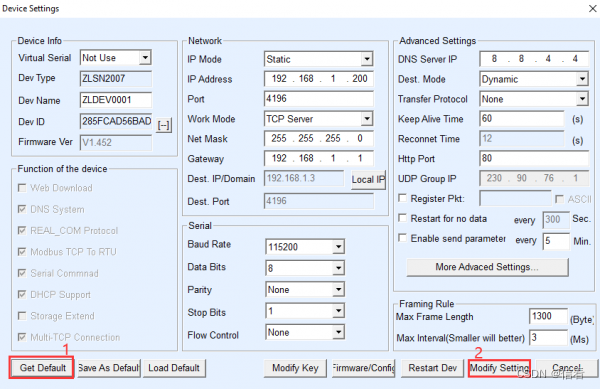


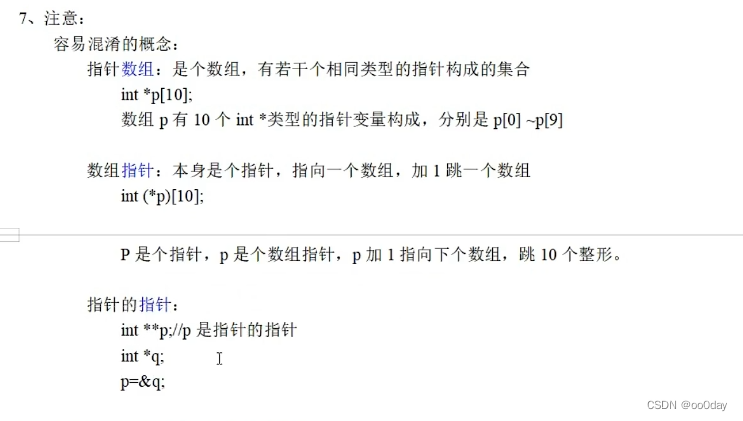
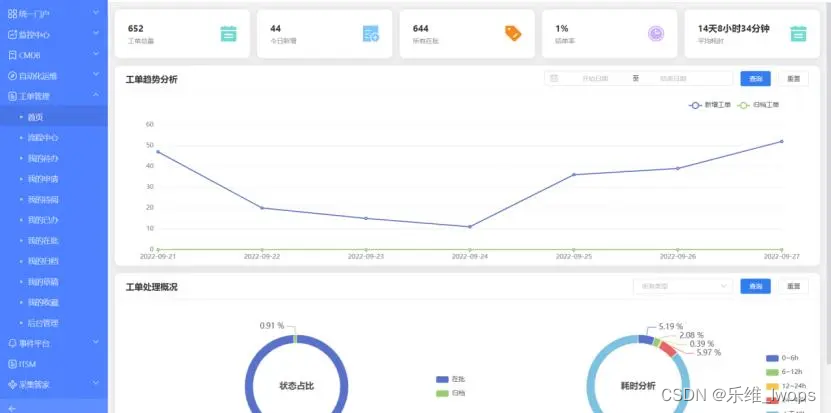
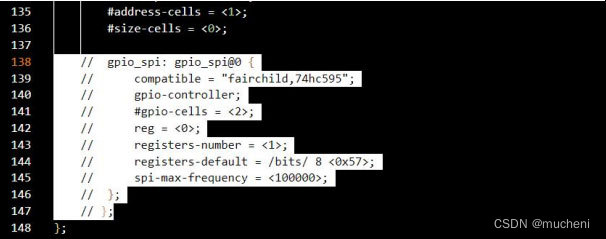
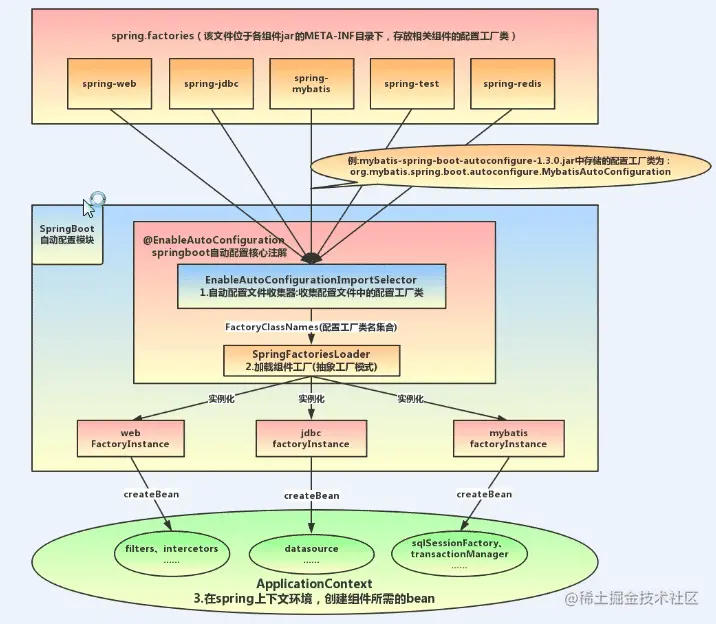
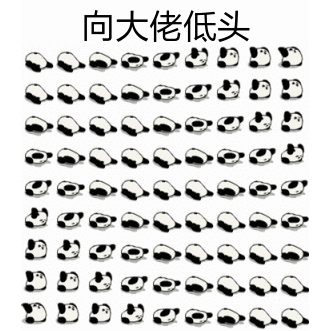





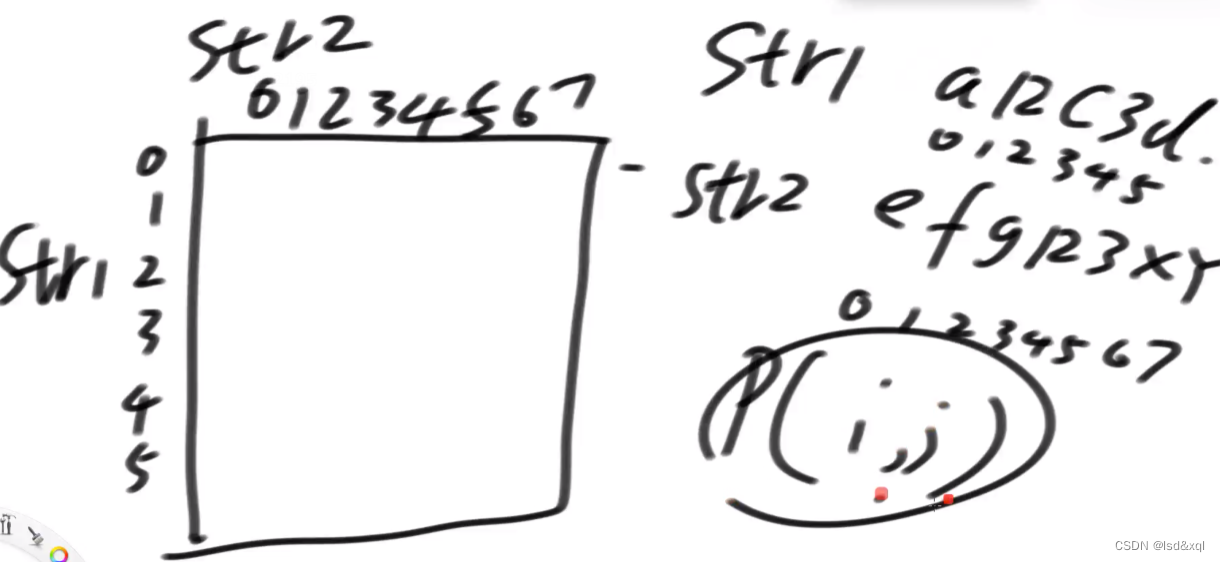


![【系列02】Java流程控制 scanner 选择结构 循环结构语句使用 [有目录]](https://img-blog.csdnimg.cn/5e68d469ab1c4584b0127228f4460473.png)
